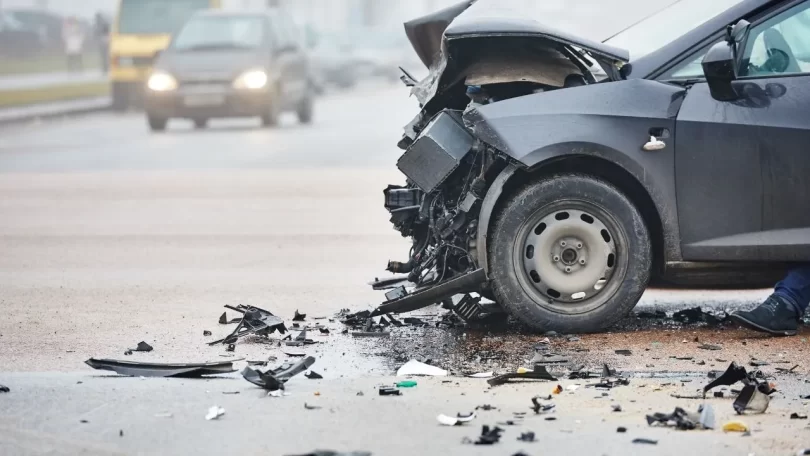You probably don’t think twice when you hop in your car and hit the road. But behind the wheel, every decision you make carries real weight. Car accidents happen far more often than many people realize, and they can change your life in an instant.
In the United States, car crashes are one of the most common causes of injury and death. Whether it’s a fender bender or a major collision, the factors leading up to these crashes typically come down to a handful of preventable behaviors.
The 6 Leading Causes of Car Accidents
Car accidents are life-changing events. And unfortunately, they’re far too common. As the lawyers at Raybin & Weissman, P.C. explain, “The lives of approximately 1.19 million people are cut short by motor vehicle accidents every year. Between 20 and 50 million more suffer non-fatal injuries, with many incurring a disability.”
Behind every number is a person – a parent, a child, a friend – whose life was turned upside down. That’s why it’s so important to take driving seriously and understand what’s really at stake.
Knowing this, let’s break down some of the most common causes of car accidents so you can stay informed and alert behind the wheel.
- Distracted Driving
This one tops the list for a reason. Distracted driving has become one of the most dangerous behaviors on the road – and it’s not just about texting. Anything that takes your hands, eyes, or attention off driving counts as a distraction.
Common forms of distractions include texting, checking directions, adjusting the radio, eating, reaching for something in the back seat, etc. All of these can reduce your reaction time. (And it only takes a few seconds of distraction to result in a crash.)
- Speeding
Speeding might seem harmless if you’re running late, but it’s one of the leading contributors to fatal crashes. Speed limits exist for a reason – they’re set based on road design, traffic patterns, and the environment.
The faster you go, the less time you have to react if something goes wrong. It also increases the severity of impact if a collision occurs. Even just 10 or 15 miles per hour over the limit can turn a minor crash into a deadly one.
Stay within the posted limits and adjust your speed for conditions. Wet roads, poor visibility, or heavy traffic all require extra caution. Be smart!
- Impaired Driving
Despite decades of awareness campaigns, impaired driving still causes thousands of deaths every year. Alcohol, prescription medications, and illegal substances all affect your judgment, coordination, and reaction time. You may feel “fine,” but even a small amount of impairment can slow your reflexes just enough to be deadly.
It’s not worth the risk – not for you, your passengers, or anyone else on the road. If you plan to drink or take medication that can affect your driving, find a safe way to get home. Use Uber, call a friend, or take public transit. All of these are safer than drinking and driving.
- Fatigue
You might not realize how dangerous drowsy driving is, but studies have shown that it can be just as hazardous as drunk driving. Falling asleep at the wheel is obviously catastrophic – but even heavy fatigue reduces your attention span, slows your reaction time, and impairs decision-making.
If you find yourself nodding off or losing focus, pull over somewhere safe and take a break. Get rest before long trips, and don’t push through exhaustion thinking you’ll be fine. It’s not worth the gamble.
- Weather Conditions
Rain, snow, ice, fog, and high winds can turn a routine drive into a high-risk situation. These elements can compromise your visibility and the physical traction that exists between your vehicle’s tires and the roads.
Most drivers underestimate how slick roads become in rain or how much longer it takes to brake on icy pavement. Hydroplaning, skidding, and losing control of your vehicle are all far more likely when weather plays a factor.
The best advice is to slow down in bad weather and increase your following distance. If conditions are really dangerous, stay off the road altogether.
- Inexperience and Poor Judgment
Newer drivers usually lack the experience needed to handle unexpected situations – especially in poor weather or heavy traffic. But even people who have been driving for decades can make poor decisions. Turning left across traffic, merging too quickly, misjudging speed and distance – we all make mistakes.
Being a “good driver” requires you to be alert and adaptable. That means scanning ahead, anticipating other drivers’ actions, and never assuming someone else will yield or stop just because they’re supposed to.
What Can You Do?
You can’t control how others drive, but you can control your own decisions. Smart, small choices add up to a much safer driving experience.
If you’ve already been in a crash caused by someone else’s reckless behavior, you have legal options to hold them accountable. But prevention is always the best case scenario.







